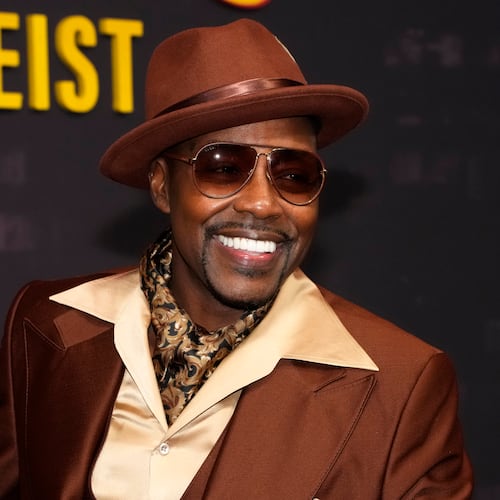Originally posted Tuesday, March 24, 2020 by RODNEY HO/rho@ajc.com on his AJC Radio & TV Talk blog
From 1970 until the late 1990s, the East Lake Meadows public housing project was considered by outsiders as the epitome of bad news: drugs, crime, poverty. Its nickname for a time was not flattering: “Little Vietnam.”
Like many other housing projects in metro Atlanta, it was eventually torn down. But this particular plot of land sits next to East Lake Golf Club, a private club that legendary golfer Bobby Jones considered his home course. That connection helped lead to a replacement mixed-use development that is considered a major success, even though it ended up displacing a vast majority of the original public housing residents.
Documentarians David McMahon and Sarah Burns, known for the Peabody Award-winning documentary "The Central Park Five" about the five boys falsely accused of rape in 1989, read about the history of East Lake Meadows public housing and became intrigued by the history of public housing itself. They decided to use East Lake as a window into the complicated history of public housing and to look at what life was like for residents of the housing project, often painted in a negative light in the media. The documentary "East Lake Meadows: A Public Housing Story" airs Tuesday March 24 at 8 p.m. on both GPB and PBA locally. (It will then be available on demand on PBS's website for a month.)
"I thought there was more to the story than meets the eye," said Burns, daughter of renowned documentarian Ken Burns, in an interview earlier this month at the Georgia Public Broadcasting headquarters in Midtown Atlanta. "We wanted to focus the story on the people. We provide the history and context to help understand their experience, but we really wanted it to be about their lives as human beings."
Over a span of a year, with the help of a private investigator, the producers tracked down hundreds of former residents. Two dozen appear in the two-hour documentary, spanning all three decades. They gathered old photos, videos and contemporaneous news stories from the vast UGA archives of WSB-TV.
When they didn't have a good visual, they hired animator Molly Schwartz to generate beautiful animated imagery to accompany colorful stories about revival preachers coming to East Lake Meadows to "save" people and a produce truck that would stop by regularly because there were no decent grocery stores nearby.
“We had these moments, these stories,” said Burns’ husband McMahon,” that were very personal, sometimes very intense. We were really inside their heads. Their memories felt like animation.”
The documentary recounts how the government began building public housing as a way to give working-class people a leg up in inner cities and provide a stepping stone to eventually buy homes, mostly in the suburbs. Unfortunately, for decades, only white folks could get bank loans and over time, public housing more and more became a repository for poverty-stricken blacks. East Lake Meadows, outside the heart of downtown Atlanta, was one of the final public housing projects developed in Atlanta, and it was shoddily built. It didn’t take long for pipes to burst, mold to rage and unsightly mud pits to replace green grass.
Residents complained, and one particular one became the leader of East Lake Meadows: Eva Davis. This documentary in many ways is a love letter to Davis' forceful defense of her home, using the media and her political might to shed light and get issues resolved. "She was a force of nature," Burns said. "She created summer camps, after-school programs, filling the gaps the government was not providing. She had the power to move votes. Politicians listened to her."
Credit: Eva Davis was the de facto defender of East Lake Meadows public housing for most of its existence. CR: PBS
Credit: Eva Davis was the de facto defender of East Lake Meadows public housing for most of its existence. CR: PBS
The documentary recounts not just the bad times such as the crack epidemic in the 1980s but how the residents found joy and community no matter how dire their circumstances were.
"A lot of people think that if you live in public housing, you're just living off the welfare system and didn't want something more in your life," said Aseelah Muhammad, 53, who lived there from 1991 to 1997 and is featured in the documentary. Her anecdote about seeing a murdered body under a stairwell the day she moved in made the final cut of the film. "That's what people thought. But this documentary tells our stories. They learn that these are just people who didn't have a break in life. Some people worked three or four jobs just to make it even living in public housing."
In the 1990s, Atlanta real estate mogul Tom Cousins — who had a deep affection for Bobby Jones — created a foundation, tore down the project and replaced it with a mixed-use community. Davis was very much in the heart of the discussions, lobbying that 50 percent of the units be affordable for East Lake Meadows residents. In the end, Davis had to settle for far less but did get her own apartment at what is now called the Villages of East Lake, which also features the city's first public charter school Drew.
Davis, who died in 2012, “was up against forces beyond her control,” Burns said. “The negotiations took years, and some people lost patience. Many residents took Section 8 vouchers and left. She didn’t have the power to set the bar on who could stay and who couldn’t. And even for some who decided to stay, the new rules and new culture made it trickier to stay there.”
The East Lake redevelopment led to Purpose Built Communities, a non-profit organization founded by Cousins, Warren Buffett and Julian Robertson which replicates the East Lake "holistic" redevelopment model in other cities to help lower-income residents in struggling neighborhoods.
Doug Blackmon, a professor at Georgia State University who followed the East Lake Meadows story as a reporter for The Atlanta Journal-Constitution from 1989 to 1996, is featured in the documentary. He was impressed by how the documentarians were able to balance the good and the bad of living in a public housing project.
While most residents agreed by the 1990s that the place needed to be torn down, Blackmon said, “it’s easy to forget that a community was destroyed with it. That was captured in the film. At the same time, they were very honest. The film makes no apologies for the drug dealers, for the people who did bad things there. But it’s clear that many thought selling drugs and committing crimes were the only way to survive or take care of their families.”
The documentarians wanted to make sure this Atlanta story also felt universal, and they were heartened by feedback at screenings held last month in other cities such as New York. “People recognized something of their own experience in the story, about the mismanagement and underfunding, the way they were built for segregation,” Burns said.
The film was finished 18 months ago but sat on the shelf. It’s unclear why it took so long for PBS to finally air it.
Credit: Brandon Thrasher at East Lake Meadows public housing in the PBS film. CR: PBS
Credit: Brandon Thrasher at East Lake Meadows public housing in the PBS film. CR: PBS
TV PREVIEW
“East Lake Meadows: A Public Housing Story,” 8 p.m. on Thurday, March 24 on both GPB and PBA. It will be available to stream for free for a month afterwards on the PBS website
About the Author
Keep Reading
The Latest
Featured






